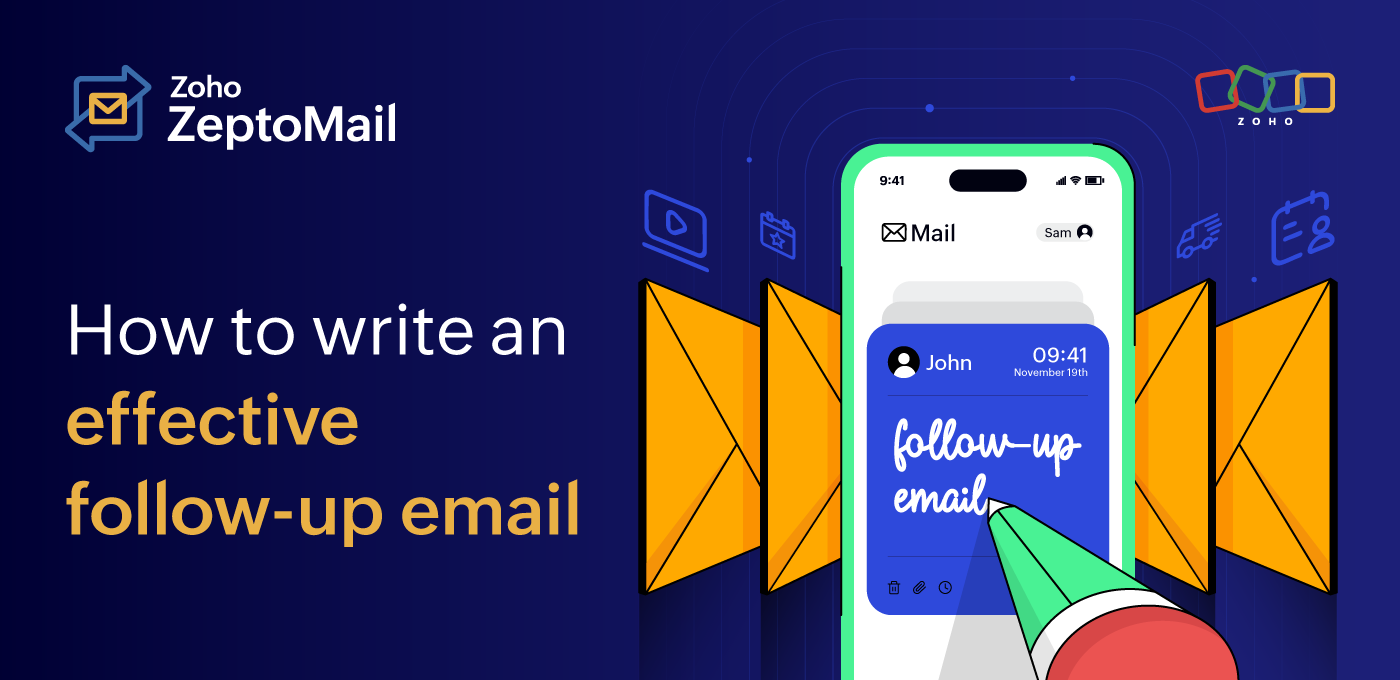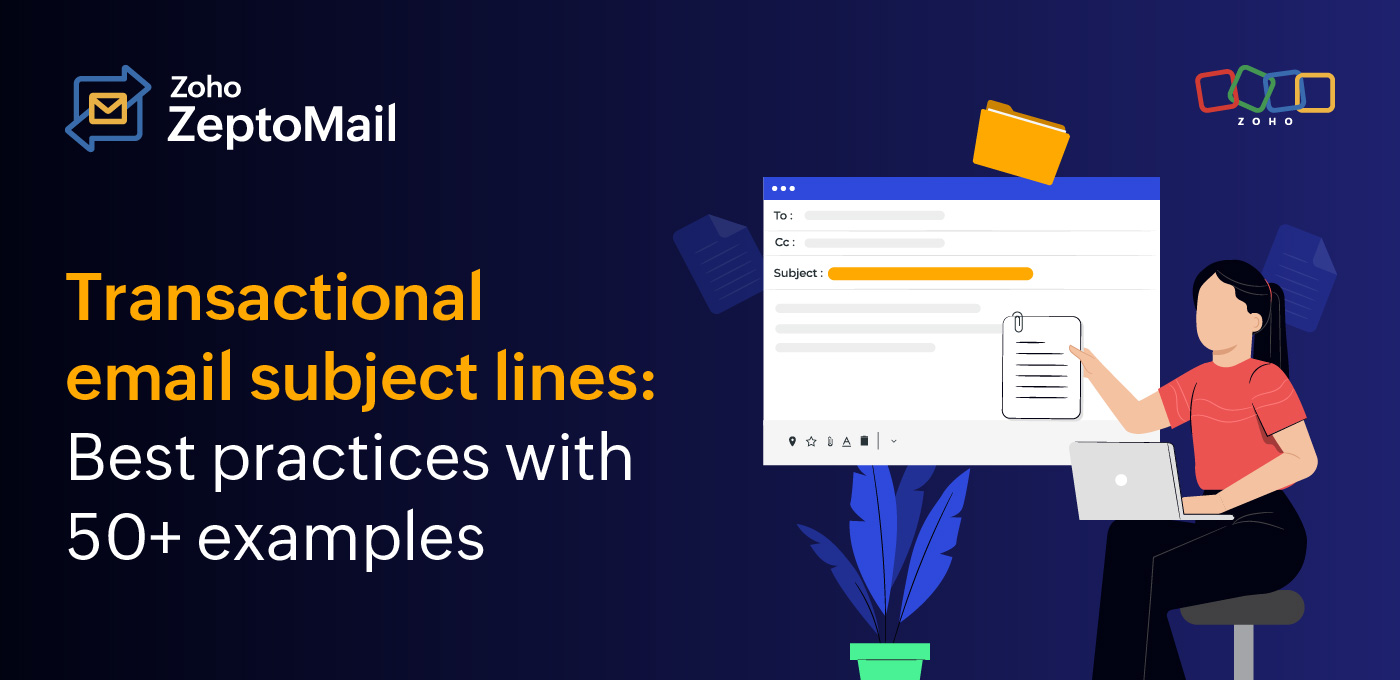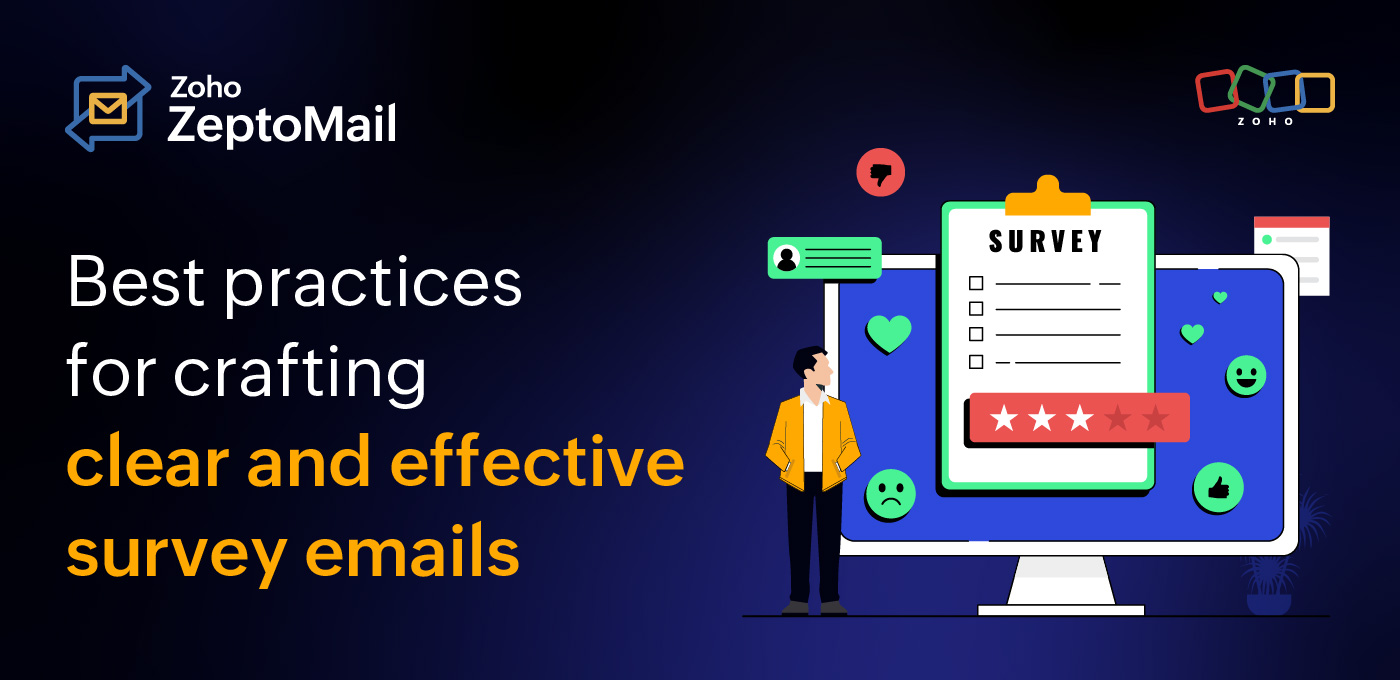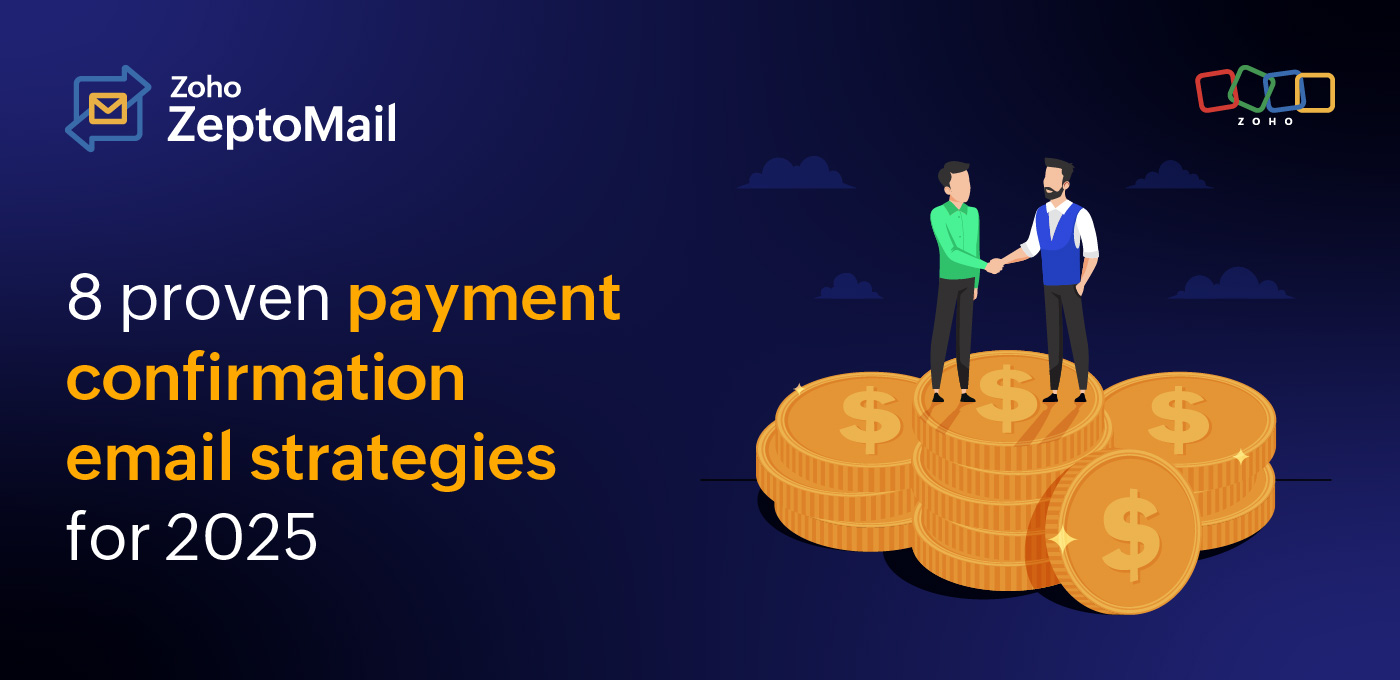- HOME
- More
- Best Practices
- How to write an effective follow-up email
How to write an effective follow-up email
- Published : December 30, 2024
- Last Updated : May 26, 2025
- 124 Views
- 8 Min Read
Besides communicating important information to the users, transactional emails have another key role to play. They help nurture your relationship with the customer and craft a good customer experience. Some emails do both, and others are sent to fulfill one of the purposes.
In this article, we'll discuss a transactional email whose primary goal is nurturing the customer relationship and guiding them in their customer journey—follow-up emails.

What is a follow-up email, and why should you send it?
In a generic context, a follow-up email—as the name suggests—is an email that is sent to build conversation on a previously discussed topic. It's sent to users after an initial interaction to discuss further, guide them, or provide more information.
Marketing follow-up emails vs. transactional follow-up emails
For context, we can split follow-up emails into two categories—marketing/sales and transactional. While these are both follow-up emails, they differ in their primary purpose.
Marketing/sales follow-up emails are often sent after a period of no response after the initial communication on the topic. The primary purpose here is to remind the user of the interaction and nudge them to make a decision. The goal here is to sell or promote the business's service or product.
Transactional follow-up emails are sent to communicate important information about the initial interaction, give a round-up of the communication, or educate the user about the next steps. Here, the primary goal is to build on the existing interaction and guide the user with useful information. This is the category of emails that we will be discussing in this article.
Follow-up email best practices
Sending follow-up emails is important to stay connected to the customer. It's an opportunity to share important information, ask for more information, guide them to the next step, or even simply give a summary of the previous interaction. While what makes a good follow-up email varies depending on the purpose of the email, there are some best practices that you can follow to craft the perfect follow-up email.
Personal greeting
If you're crafting a follow-up email, it means that the user has already had a substantial interaction with your business. Owing to this existing connection, it's always best to open the email with a personal greeting. It will help set a warm tone for the email and make the user relate better to the email.
"From" name and email
With tons of emails pouring into every inbox on a daily basis, make sure that your "From" name and email address make your email instantly recognizable. Use the name of the employee that was involved in the previous interaction and use a business email address associated with the employee or most relevant to the context. For example, From name: Victor from Zylker and From email: victor@zylker.com or webinars@zylker.com.
Context of the interaction
You'll need to set the context for the interaction you're following up on. Depending on the duration between the initial communication and the follow-up email, the need for context may vary, but considering that the user might come back to the email at any time, it's essential to make sure the reason for your email is easy to glean.
Gratitude
Thank the customer for choosing to interact with your business and giving their time to you. Thanking them in the email can help make them more receptive to the information or steps in the rest of the email.
Value-added content
It's not enough to simply reiterate or mention the initial interaction. Transactional follow-up emails need to be sent only if they add value to the customer. Highlight any information that's useful or include new information that the customer will find valuable. For example, you can give a summary of the meeting or share the recording of the concluded webinar.
A clear call to action
If there's a specific action that you'd like the user to take in the email, craft it into a CTA. Make sure that this CTA is well designed and placed prominently in the email. The text of the CTA should reflect what specific action needs to be taken. For example, "Take the Survey" instead of "Click Here."
Responsive design
Gone are the days when everyone logged into their computers to read an email. Today, emails are read from a plethora of devices in all sizes and forms. It's essential to make sure that your email is tested across different devices, clients, browsers, and screen sizes to ensure that it's accessible to the recipient.
Intimation
To ensure that your users open your follow-up email, you can notify them at the end of the initial interaction. A simple "We'll drop you an email with some important information that will help your next steps" is enough to nudge the user to keep an eye out for your follow-up email.
Follow-up timing
Choose the duration between your interaction and follow-up email wisely. Some interactions need an immediate follow-up, while others need a cool off time before the user is ready to respond again. Depending on your scenario, make sure that you time your follow-up emails well.
These are just some of the best practices that are most relevant to follow-up emails. You can take a look at more detailed best practices here.
Follow-up email templates
The content of follow-up emails can vary based on their purpose, but here are several templates for some common follow-up emails.
Webinar follow-up emails
These emails are an important part of a webinar email sequence. They're sent immediately after a webinar to both acknowledge the completion of the webinar and to share other resources.
Template #1: Webinar completion follow-up
Dear [Customer Name],
Thank you for attending our [topic] webinar live!
It was great having you, and we hope you were able to get the best out of the webinar experience.
We'll be sharing the recording of the webinar in our next email. Please feel free to drop any follow-up questions you might have to [email].
If you enjoyed our webinar, here's a list of our future webinars you can choose from:
[List of future webinars]
We hope to see you again soon!
Cheers,
[Your Name]
Template #2: Webinar recording follow-up
Dear [Customer Name],
Your recording is here!
Thank you for attending our webinar on [topic] that was conducted on [date].
As promised, here's the full recording of the webinar: [recording link].
You can download the additional resources shared during the webinar from here: [link].
We discussed how [product name] can help boost your business productivity during the webinar. You can try the product for free [hyperlink to product page] or schedule a demo [hyperlink to demo form] with us.
We'd love to hear your feedback on our webinar. Please complete this survey and let us know what we did well and what we can do better.
And finally, we're always just an email away at [email ID]. Drop us a message with your questions, and we'll get right back to you.
Thank you!
Cheers,
[Your Name]
Event follow-up emails
If you're organizing an event, simply disappearing after the event has concluded is not a great way to end your interaction. It's best to send out a follow-up email after the event to nurture your relationship with the registrants.
Template #3: Event summary
Dear [Customer Name],
It was wonderful having you at our Tech Summit. Everyone at [Company Name] hopes you had a productive and engaging day at our conference.
Here's a quick summary of the event that you can refer to in the future: [link].
We'd love to hear your feedback about the different presenters at the event and any advice you might have on how we can do better next year.
We'd be grateful if you could fill out this quick survey so we can learn from your experience.
[Survey CTA]
Thanks again and hope to see you next year at our conference. Please feel free to reach out to me at [email address] if you have any questions.
Best regards,
[Your Name]
Meeting follow-up email
Important meetings, especially those with clients or customers, need to be followed up on to maintain the relationship you've established with the customer. This email should give them a summary of the meeting and a quick way to reach out to you. Keep it short.
Template #4: Meeting recording
Dear [Customer Name],
Thank you for taking time out of your busy schedule to connect with us over an online meeting.
Here's a quick summary of the meeting that you can refer to in the future: [link].
You can also view the recording of the full meeting here: [meeting recording link].
Thanks again and hope to talk to you soon. Please feel free to reach out to me anytime.
Regards,
[Your Name]
Appointment follow-up
Across industries, there are multiple types of appointments that businesses take with the user. It's best to send a follow-up email after the appointment with the right information to guide them after the appointment. Here are templates for a couple of scenarios.
Template #5: Doctor appointment
Hello [Patient Name],
Thank you for choosing our clinic for your healthcare appointment. We hope your experience at our clinic was satisfactory.
Please find the doctor's report attached to this email.
As mentioned during the appointment, your follow-up appointment has been scheduled for November 25 at 10:00 am.
Please reach out to [email address] for any questions.
Regards,
[Your Name]
Template #6: Beauty service appointment
Hello [Client Name],
We loved having you at [Salon/Spa Name]. I hope we were able to help you relax and enjoy your spa day.
Here's your receipt for your appointment: [link].
You can download a comprehensive post-session routine from our website to help you get the best out of our services: [link].
Your follow-up appointment is scheduled for December 13 at 4:00 pm. We're looking forward to seeing you again!
Best regards,
[Your Name]
Template #7: Consultation appointment
Hello [Customer Name],
Thank you for choosing [Consultancy Name] for your technology requirements.
We had an insightful appointment with your team.
As we mentioned in the appointment, here are the resources that will help you make an informed decision: [link].
Your follow-up appointment is scheduled for December 13 at 4:00 pm. We look forward to seeing you again!
Best regards,
[Your Name]
Delivery follow-up email
If you sell a popular product that is delivered to customers often, you probably already have a series of emails in place throughout the customer journey. However, some businesses tend to overlook the post-purchase experience, but especially so for the post-delivery experience.
Template #8: Consultation appointment
Hello [Customer Name],
Thank you for purchasing from [Store Name]. It's been a pleasure serving you.
We're glad that your order has reached you safely. Here's a detailed guide on how to set up the product and the maintenance required: [link].
Enjoy your purchase! In the meantime, we'd love to know more about your experience. Please take this short survey to share your feedback.
[Survey CTA]
We look forward to your next order!
Best regards,
[Your Name]
Wrapping up
Follow-up emails are among the most-often overlooked transactional emails. Just like welcome emails are your opportunity to make a good first impression, follow-up emails may be your last interaction with them for a while. Use the best practices and templates described in this article to craft the perfect follow-up email for maximum customer retention and a great long-term customer relationship.














